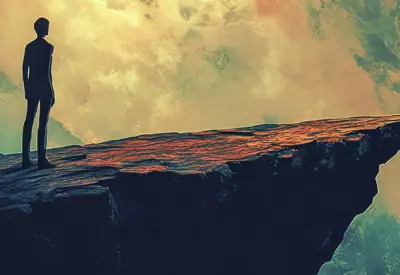In a world that constantly craves the "next big thing," every fresh idea carries whispers of the ages past. In this article, Narain Batra argues that new trends in fashions and even technology, are remixes of ancient concepts, rather than innovations that spring up from nowhere.
Last year, at The Institute of Arts and Ideas, prominent thinkers including Stanley Fish a literary critic, legal scholar, and public intellectual; Claire Hynes, Associate Professor in Literature & Creative Writing at the University of East Anglia; and Martin Puchner Harvard Professor and philosopher, debated whether in the grand symphony of human creativity, is anything truly new, or are we merely remixing the echoes of the past?
From fashion and fantasy to business and art, it can feel like every “new” idea has a familiar echo, a déjà vu of something that came before. Our hunger for originality meets the reality that every idea stands on the shoulders of older concepts, and every invention reimagines past creations. But does this mean there’s no true originality? Or does it reveal a deeper beauty in how ideas evolve and re-invent themselves?
Take fashion, where every decade brings a revival of an era. Right now, the 90s are having a moment—cargo pants, chokers, and crop tops are back with a vengeance. But are they really “back,” or did they ever leave? The same threads reappear over and over in our closets, often with subtle tweaks but the same DNA. Why?
Fashion, like language, is a living, breathing narrative that we collectively write. When designers bring back bell-bottom jeans or retro jackets, they’re not necessarily trying to rehash the past. They’re looking to the familiar for comfort and continuity while layering on new materials, cuts, and cultural significance. Fashion acts as a time-traveling storyteller, allowing each generation to reimagine and reinterpret an era’s style, giving it new energy while paying homage to its roots.
___
Nearly every story across time and cultures follows a common arc: a hero ventures out, faces adversity, overcomes trials, and returns transformed.
___
In the words of designer Coco Chanel, “Fashion changes, but style endures.” The innovations might lie in the details, the ways each piece fits into today’s society, culture, and technology. The broader story of clothing is the same—identity, self-expression, community—but each generation tells it in its way.
Storytelling, from ancient myths to today’s blockbusters, might be the most obvious example of the paradox of originality. Think of Joseph Campbell’s The Hero with a Thousand Faces, a book that describes the “monomyth” or “hero’s journey.” The premise? Nearly every story across time and cultures follows a common arc: a hero ventures out, faces adversity, overcomes trials, and returns transformed. Star Wars, Harry Potter, and The Odyssey—are all rooted in the same ancient narrative structure.
 SUGGESTED READING
After the death of the grand narrative
By Matt McManus
SUGGESTED READING
After the death of the grand narrative
By Matt McManus
But here’s where it gets interesting: while the plot skeleton may be the same, the specifics—the characters, the settings, the voices—bring infinite variations. J.K. Rowling reimagined the hero’s journey in the halls of a magical boarding school, while George Lucas took it to a galaxy far, far away. By infusing old tropes with new cultural influences, settings, and details, creators make something that feels both timeless and uniquely fresh.
A great metaphor here is a kaleidoscope. The patterns are made of the same fragments, yet every twist reveals a new image. The stories we tell might use pieces of the same myths, but each twist of the cultural kaleidoscope yields something singular, something that feels new, even if its foundation isn’t.















Join the conversation